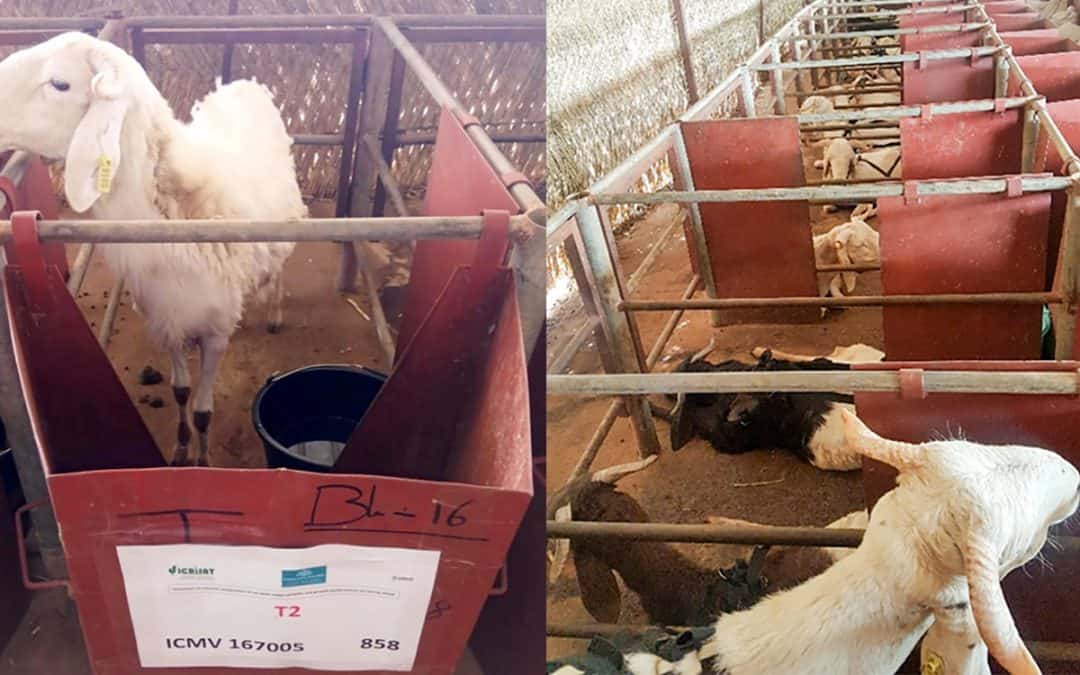
Two varieties of dual-purpose (food and fodder) pearl millet were shown to increase weight and overall growth in sheep, according to a study conducted in Niger. These two varieties could be considered as good quality fodder for crop-livestock systems in the country.
Earlier this year, Dr Clarisse Umutoni et al. conducted a study to assess the quality of crop residues of five new pearl millet varieties used as fodder for local young sheep. The study revealed that the different varieties of pearl millet differ in digestibility and nutrient composition which significantly affects the growth performance of the sheep.

Head length of ICMV 167005 and
ICMV 167006. photo: Prakash Gangashetty, ICRISAT, Niger.
Out of the five dual-purpose varieties (Chakti, ICMV 167005, ICMV 167006, ICMH 177111 and ICMV 167002) developed in Niger, two varieties (ICMV 167005 and ICMV 167006) provided higher final live weight and average daily live weight gain in the sheep at the end of the study period. Moreover, the sheep fed ICMV 167005 excreted lower levels of nitrogen in their feces. This means a lower impact on environment, which is also a favorable factor towards selection of this variety.
Digestibility of fodder is one of the key factors that have significant impact of livestock productivity and, in turn, on household economy. When animals feed on low-energy-value feeds (low digestible energy), their digestive systems slow down, resulting in reduced appetites. The combined effect of reduced appetite, lower feed intake and slower release of digestive energy leads to low weight gain and decreased milk production (see figure overleaf).

Poor quality fodder leads to decreased output from small ruminants.
ICMV 167005’s other traits include medium maturity (85–90 days), downy mildew resistance, striga tolerance, long panicle (75–80 cm), high grain yield (1.5–1.8 t/ha) and high fodder yield (4.8–5.1 t/ha) with high in vitro biodigestibility (53%).
Characteristics of ICMV 167006 include, high tillering (3–4 per plant), early maturing (75–80 days), downy mildew resistance, high grain yield (1.5–1.6 t/ha), compact medium-length panicles (45–50 cm), high fodder yield (4.2–4.5 t/ha) along with high in vitro digestibility (51%).
These two varieties were released for commercial cultivation in Niger for the Sahelo-Sudanian zone and are ready for commercialization in Economic Community of West African States (ECOWAS) countries.
